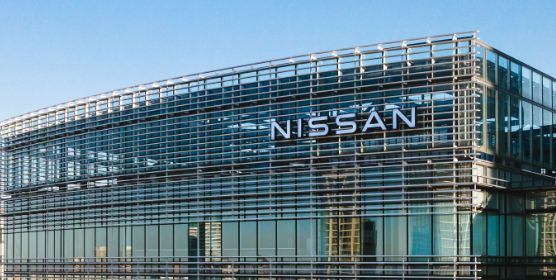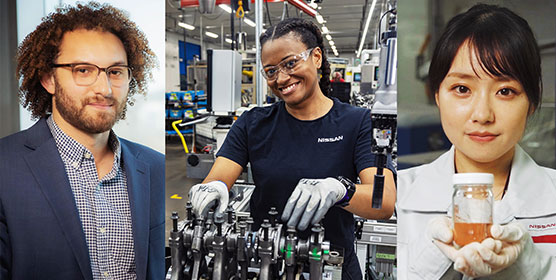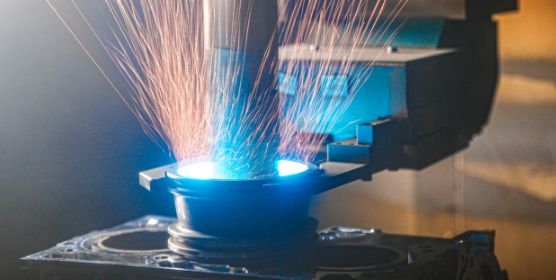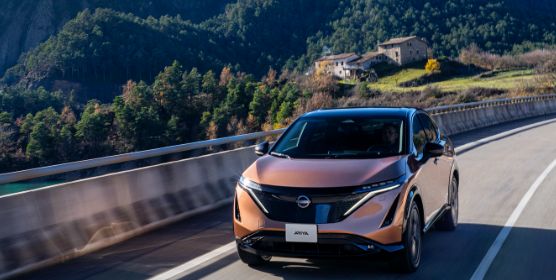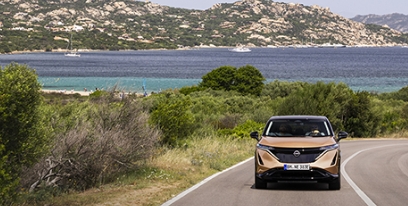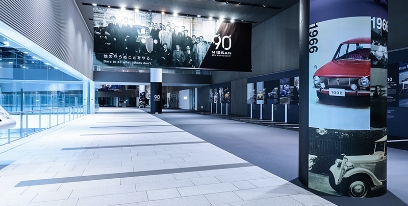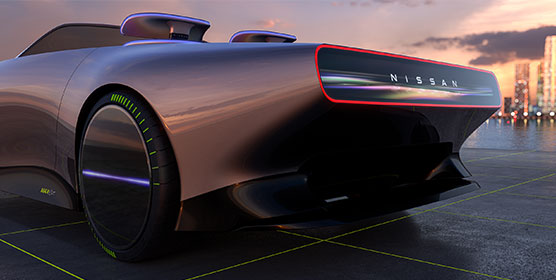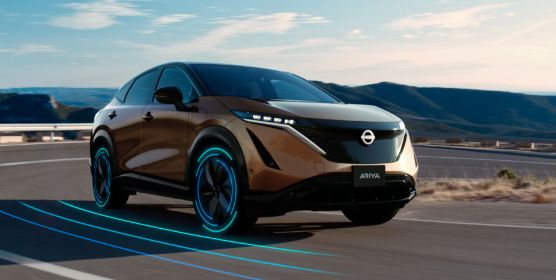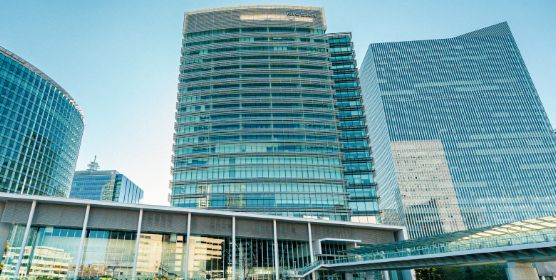Manufacturing activities
Energy Saving in Global Production
Most CO2 emissions in the manufacturing process come from the consumption of energy generated by fossil fuels. Nissan engages in a variety of energy-saving activities in the manufacturing process in pursuit of the lowest energy consumption and CO2 emissions of any automobile manufacturer.
In the realm of automotive production technology, we are introducing highly efficient equipment and improving manufacturing techniques. Other key approaches are the three-wet paint process and low-temperature baking technology used for vehicle painting, which enables the body and bumpers to be painted at the same time. Approximately 30% of CO2 emitted from manufacturing plants comes from the painting process, thus shortening or eliminating processes and lowering temperatures during the process will lead to a reduction in CO2 emissions. The low-temperature three-wet painting technology introduced by Nissan enables the body and bumpers, which were previously painted separately, to be painted at the same time, reducing CO2 emissions from the painting process by 25% or more. Nissan has implemented this technology in the new production line at the Tochigi Plant (launched in 2021) and will gradually expand its roll out as painting facilities become more sophisticated in the future. Also, systems for recycling air expelled from booths for reuse needed dehumidifying processing to ensure that the air was at the humidity required. Dry paint booths can reuse air without dehumidifying it, reducing energy consumption to less than half its previous levels. This technology was adopted for the dry paint booths at our Sunderland Plant in the U.K. (operating since September 2018) and has also been implemented on the new line at the Tochigi Plant.

Simultaneous
Painting
of
Body
and
Bumpers
CO2
emissions
have
been
reduced
by
simultaneously
painting
the
body
and
bumpers
using
a
new
technology
and
consolidating
them
into
one
process
(right)
and
drying
at
a
low
temperature
(85oC)
instead
of
the
conventional
two-step
process
(left).
To
reach
the
defined
objectives
for
CO2
emissions
and
the
use
of
energy,
Nissan
solicits
proposals
from
each
global
site,
preferentially
allocating
investment
based
on
the
benefit
in
CO2
reduction
compared
to
project
costs.
By
making
value
of
carbon
one
key
factor
in
internal
evaluations,
Nissan
enables
more
efficient
investment
and
greater
competitiveness.
Nissan
plants
use
finely
controlled
lighting
and
air
conditioning
for
low-energy-use
and
low-energy-loss
operations.
The
company
is
promoting
CO2
emission
reduction
activities
and
introducing
cutting-edge
energy-conservation
technology
from
Japan
to
its
plants
worldwide.
Meanwhile,
Nissan
plants
in
all
countries
learn
and
share
best
practices
with
each
other.
In
addition,
Nissan
Energy
Saving
Collaboration
(NESCO)
diagnoses
energy
loss
at
the
plants
and
proposes
new
energy-saving
countermeasures.
A
NESCO
team
was
established
for
Japan
in
2003,
and
teams
for
Europe,
Mexico
and
China
in
2013.
A
NESCO
team
has
also
been
launched
to
support
energy-saving
efforts
at
Alliance
partner
Renault.
Nissan
takes
into
consideration
the
balance
of
CO2
emissions
for
the
entire
company,
its
renewable
energy
usage
rate
and
cost
when
sourcing
the
energy
it
uses.
Choosing
the
best
suited
suppliers
for
achieving
CO2
reduction
targets
is
a
key
activity
for
Nissan.



